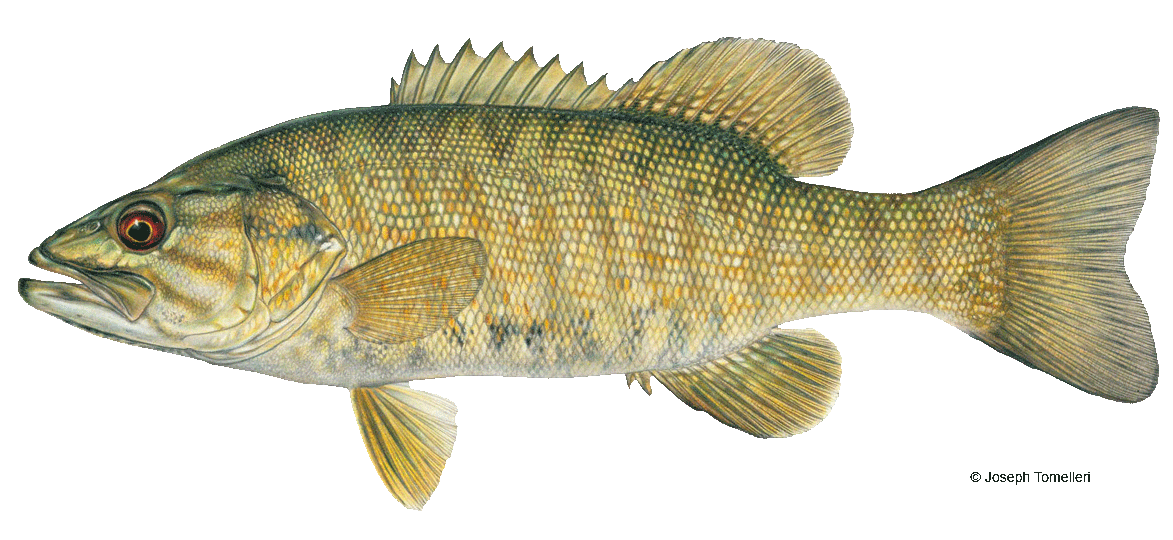
Fun Facts
- Species Name: Micropterus dolemieui
- Common Names: smallmouth, smallie, bronzeback, brown bass, bronze bass, brownie
- State Record: 6 lbs. 13 oz. Caught in Lake Eden in 2003 by Issac Spaulding.
Description
Although closely related to the largemouth bass, smallmouth bass prefer deeper, cooler, clearer waters and are visually distinguishable from largemouth bass in several ways: when their mouth is closed, their upper jaw extends only to just below their eye, and their flanks are golden green to brownish bronze, often with 8 to 15 dark, thin vertical bars.
Where to Fish
Vermont offers world-class smallmouth fishing opportunities ranging from the big-water bronzebacks of renowned Lake Champlain, to the current-thriving smallies of the Connecticut River.
Other well-known smallmouth bass fisheries include lakes Memphramagog, St. Catherine, Eden, Salem and Seymore, as well as Woodward, Waterbury and Harriman reservoirs.
Check out Vermont’s Spring Catch and Release Bass Fishing Opportunities
How to Fish
Smallmouth bass, similar to largemouth bass, feed heavily on bottom-inhabiting crayfish, as well as a variety of baitfish including yellow perch, smelt and alewife, among others. They also feed on many types of insects. Using live-bait or lures that match or imitate these bait species will help you to be successful when targeting smallmouths.
Also, be sure to fish around prime smallmouth habitat that typically includes clean, rocky or gravelly bottom, ledge, sharp-drop offs, current breaks, off-shore islands and reefs, and rock piles both on and off-shore.
